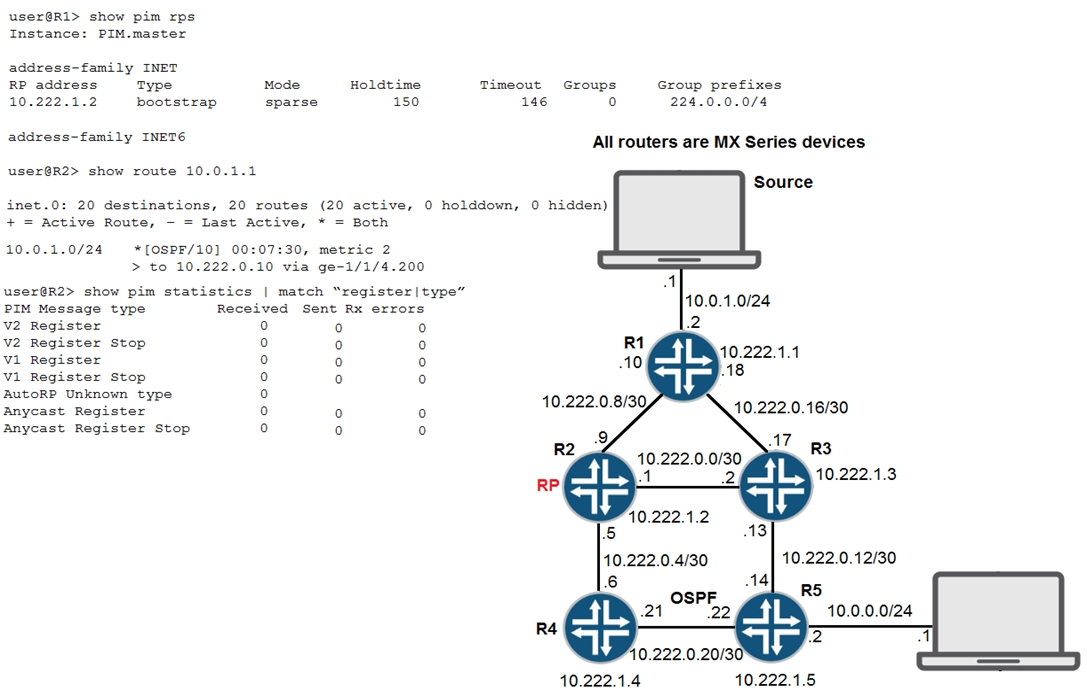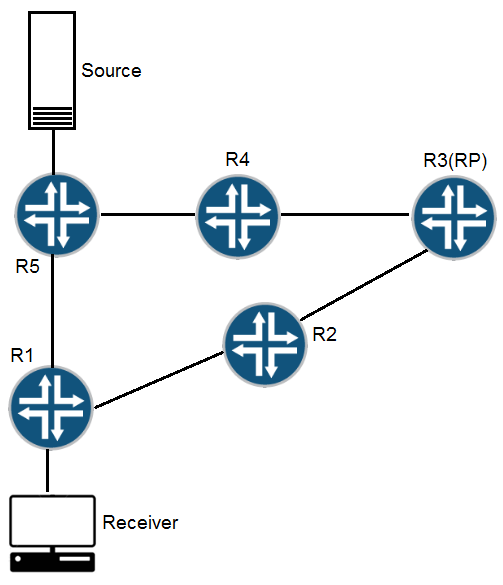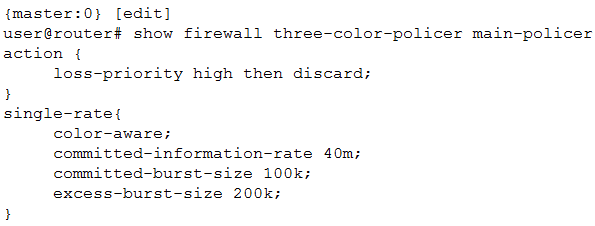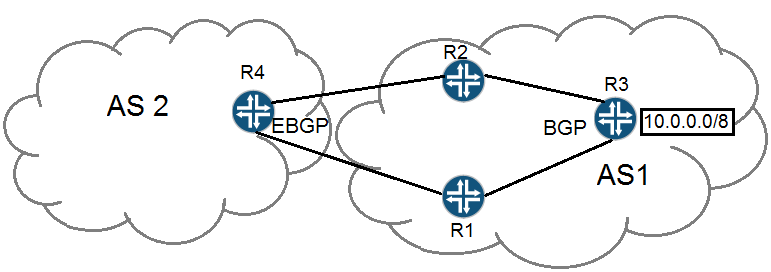Enterprise Routing and Switching, Professional (JNCIP-ENT) v1.0
Question 1
Click the Exhibit button.

Referring to the exhibit, the source is currently sending multicast traffic using group 224.1.1.1, which is being received by R1. R2 is not receiving PIM register messages.
What would be the cause of this problem?
- A. Tunnel services have not been enabled on R1.
- B. All routers have not been configured with the same Auto-RP discovery group.
- C. R5 has not received an IGMP report of 224.1.1.1.
- D. A(*,G) tree has not been built yet.
Answer : C
Question 2
Your company has expanded into office space across the street. The new office space has a single Ethernet connection connected to an unmanaged switch. You must sort traffic based on the IP address into different VLANs once the traffic arrives on your EX Series switches.
Which mechanism would you use to accomplish this task?
- A. MVRP
- B. filter-based VLANs
- C. Q-in-Q tunneling
- D. dynamic VLANs
Answer : B
Question 3
Which protocol is used for port-level access control and authentication?
- A. MD5
- B. IPsec
- C. 802.1X
- D. AES
Answer : C
Question 4
Which type of BGP is used to peer with a different autonomous system?
- A. external
- B. classless
- C. dynamic
- D. static
Answer : A
Question 5
Which statement is correct about MSTP?
- A. MSTP enables mapping multiple independent spanning-tree instances onto one physical topology.
- B. MSTP enables dynamic discovery of Layer 2 neighbors.
- C. MSTP dynamically manages VLAN registration in a LAN.
- D. MSTP uses stacked VLAN tags to extend a Layer 2 Ethernet connection between multiple sites.
Answer : A
Question 6
Click the Exhibit button.

Referring to the exhibit, a PIM-SM network is set up to enable communication between multicast devices.
Which statement is true in this scenario?
- A. After the formation of the shortest-path tree, a prune message is sent from R1 to R5.
- B. After the formation of the shortest-path tree, a prune message is sent from R1 to R2.
- C. After the formation of the shortest-path tree, a join message is sent from R5 to R1.
- D. After the formation of the shortest-path tree, a join message is sent from R1 to R5.
Answer : B
Question 7
A BA classifier, input policer, and a multifield classifier are applied to an interface.
In which order are these features processed?
- A. policer ""> BA classifier ""> multifield classifier
- B. policer ""> multifield classifier ""> BA classifier
- C. multifield classifier ""> BA classifier ""> policer
- D. BA classifier ""> multifield classifier ""> policer
Answer : A
Question 8
You are deploying PIM source-specific multicast (SSM) for a new multicast messaging service. You have configured the multicast source to use 235.44.123.100 as the multicast address. You are not able to join the PIM SSM multicast feed.
Which two solutions would resolve this problem? (Choose two.)
- A. Reconfigure the multicast source to use an address in the range of 224.0.0.0 through 224.255.255.255.
- B. Reconfigure the multicast source to use an address in the range of 232.0.0.0 through 232.255.255.255.
- C. Add the multicast address to the [edit routing-options multicast ssm-map] stanza.
- D. Add the multicast address to the [edit routing-options multicast ssm-groups] stanza.
Answer : BD
Question 9
Which protocol is a multicast routing protocol?
- A. OSPF
- B. BGP
- C. PIM
- D. IS-IS
Answer : C
Question 10
Click the Exhibit button.

You have configured and applied the policer shown in the exhibit to your Junos device.
Which statement is true in this scenario?
- A. Traffic exceeding the committed-burst size will be marked with a loss priority of high.
- B. Traffic exceeding the excess-burst size will be discarded.
- C. Traffic exceeding the committed-information-rate will be rate limited.
- D. Traffic exceeding the committed-burst size will be discarded.
Answer : A
Question 11
When configuring 802.1X authentication, what are three server fail fallback settings? (Choose three.)
- A. log
- B. sustain
- C. permit
- D. count
- E. move
Answer : BCE
Question 12
Your network is configured for EVPN load balancing on three different access switches. During an outage, you notice that not all interfaces are receiving traffic as expected.
Which two requirements would you validate to identify this problem? (Choose two.)
- A. Validate that the same esi value is configured on multiple interfaces on all switches.
- B. Validate that the all-active flag is configured for multiple interfaces on each switch.
- C. Validate that all-active is configured for only one interface per switch.
- D. Validate that the same esi value is only configured on one interface per switch.
Answer : AC
Question 13
You are redistributing static routes into an OSPF area.
Which two statements are true in this scenario? (Choose two.)
- A. The routes can be advertised in type 7 LSAs.
- B. The area must be a stub area.
- C. The external route advertisements have a domain scope.
- D. The area must be the backbone area.
Answer : AD
Question 14
You want to view the VLANs that have been created dynamically using MVRP.
Which operational mode command will display this information?
- A. show mvrp registration-state
- B. show mvrp dynamic-vlan-memberships
- C. show mvrp interface
- D. show mvrp applicant-state
Answer : B
Question 15
Click the Exhibit button.

Which well-known community needs to be used to restrict 10.0.0.0/8 from being advertised to AS 2?
- A. no-publish
- B. no-advertise
- C. no-export-subconfed
- D. no-export
Answer : D